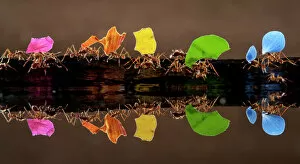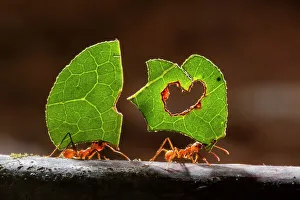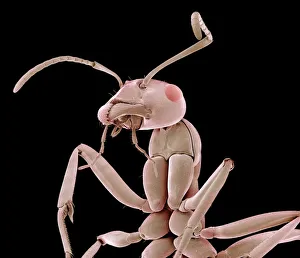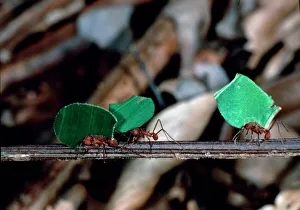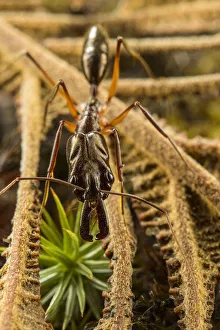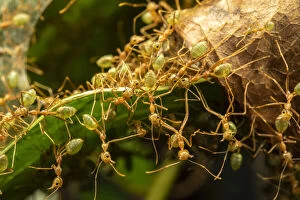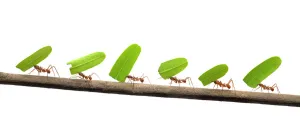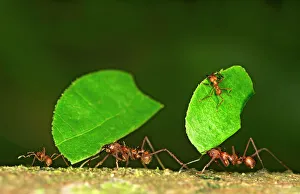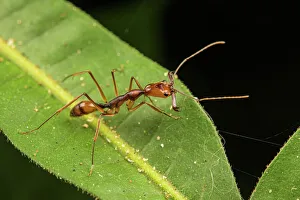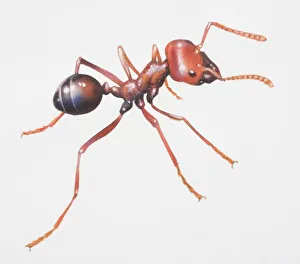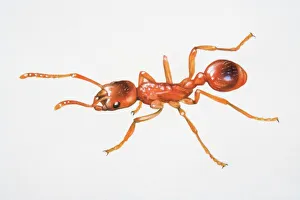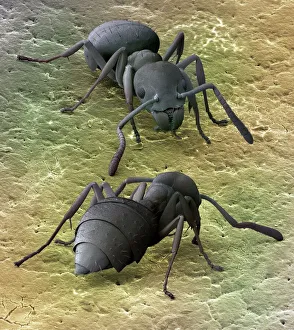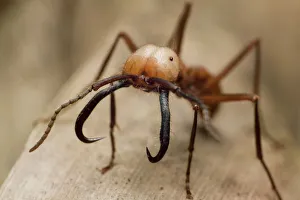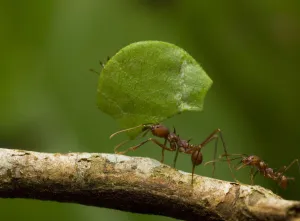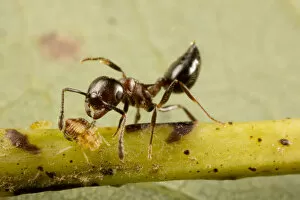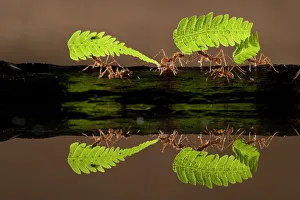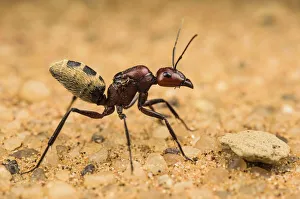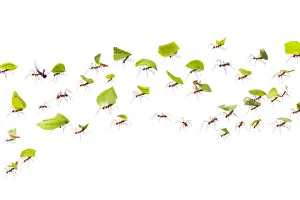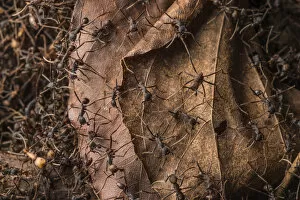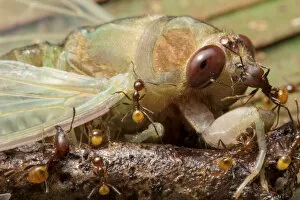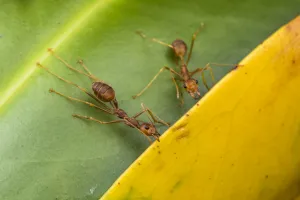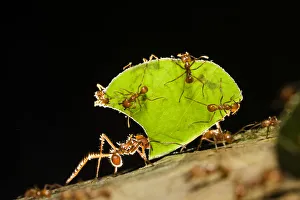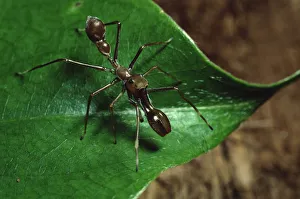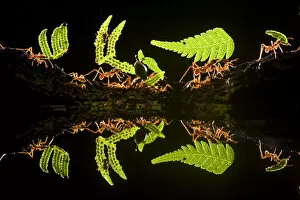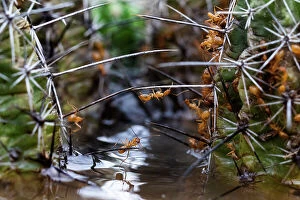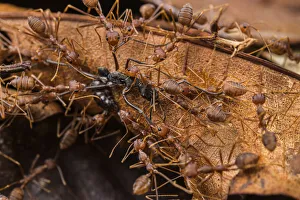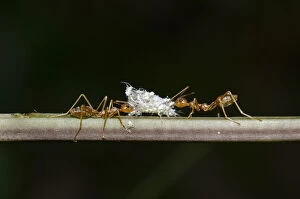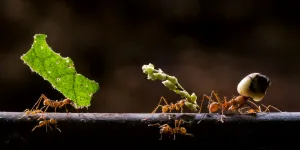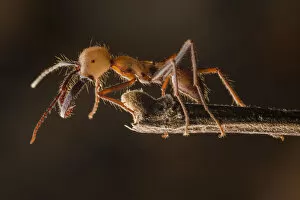Formicidae Collection
Formicidae, commonly known as ants, are fascinating creatures that exhibit remarkable strength and teamwork
All Professionally Made to Order for Quick Shipping
Formicidae, commonly known as ants, are fascinating creatures that exhibit remarkable strength and teamwork. In Costa Rica, leaf-cutter ants (Atta sp) can be seen tirelessly carrying plant matter, showcasing their impressive ability to transport loads much larger than themselves. These industrious insects form long lines as they march together, each ant diligently contributing to the task at hand. The intricate details of an ant's anatomy are revealed in a scanning electron microscope image. The precision and complexity of their body structure highlight their adaptability and efficiency in various environments. Digital composites capture the mesmerizing sight of a line of leaf-cutter ants gracefully carrying leaves through lush landscapes. In Laguna del Lagarto, the vibrant colors of plant matter carried by leaf cutter ants create a stunning reflection in water. This harmonious blend between nature and these tiny workers showcases the beauty found within even the smallest ecosystems. Traveling further into Tambopata Nature Reserve in Peru reveals another species of leafcutter ants - Atta cephalotes - diligently transporting pieces of leaves into their nest. Their unwavering dedication to building and maintaining their colony is truly awe-inspiring. The trap-jaw ant (Odontomachus hastatus) exhibits its unique defense mechanism with mandibles wide open at Los Amigos Biological Station in Peru. These powerful jaws serve not only for protection but also for capturing prey swiftly and efficiently. A side view of Messor sp. , commonly known as harvester ant, displays its distinctive features while going about its daily activities. Its strong presence reminds us that every creature has an important role to play in our ecosystem. Zooming closer into Myrmica molesta or red ant reveals intricate patterns on its exoskeleton when observed up close. Such attention to detail highlights the diversity present among different species within Formicidae family. Examining tropical ants under a scanning electron microscope unveils astonishing textures and structures on their bodies.

